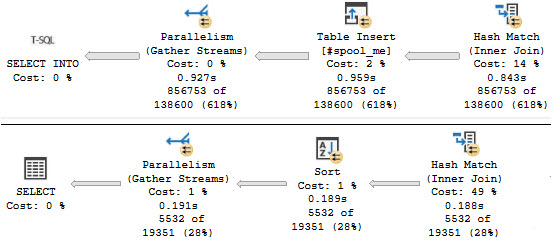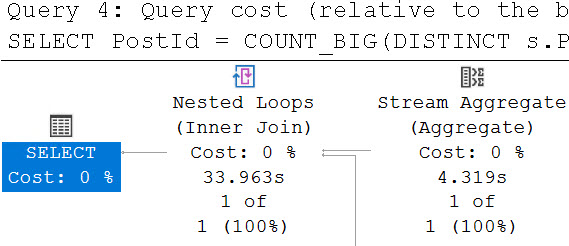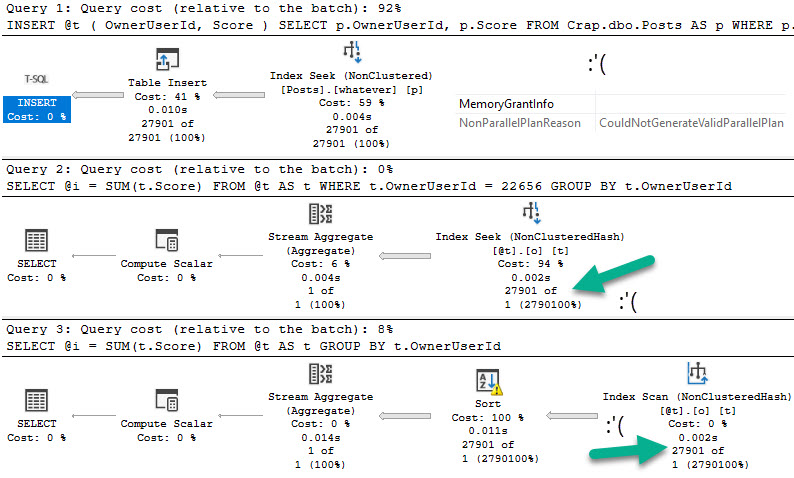Work Off
While helping a client out with weird performance issues, we isolated part of the code that was producing a whole bunch of bad plans.
At the intersection of bad ideas, there was a cursor looping over a table gathering some data points with a local variable in the where clause.
For more background on that, check out these posts:
- Yet Another Post About Local Variables
- Things SQL Server vNext Should Address: Local Variable Estimates
One might expect the query inside the cursor to be subject to some special rules, but alas, nothing good comes of it.
Eau de Sample
To repro a little bit, we need to create a certainly suboptimal index.
CREATE INDEX p ON dbo.Posts
(OwnerUserId);
If you have a lot of single key column indexes, you’re probably doing indexing wrong.
Full demo code is at the end because it’s a bit long, but the end result is five query plans that all share the same bad estimate based off the density vector.
The worst of them looks like this:
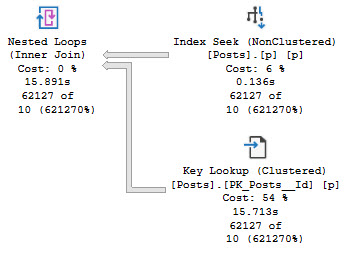
And the best of them looks like this:

Over and Over
If you’re getting bad guesses like this over and over again in any loop-driven code, local variables might just be to blame.
That guess of 10 rows of course comes from this calculation:
SELECT
density =
(
1 /
CONVERT
(
float,
COUNT(DISTINCT p.OwnerUserId)
)
) *
COUNT_BIG(*)
FROM Posts AS p
Which, with a little bit of rounding, gets us to the estimate we see in the query plan:
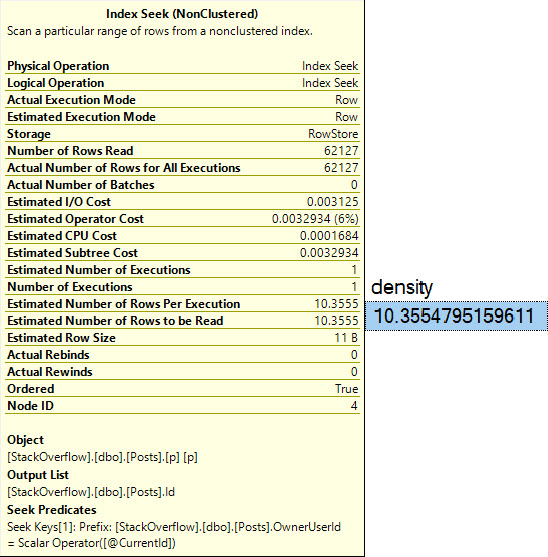
Thanks for reading!
Going Further
If this is the kind of SQL Server stuff you love learning about, you’ll love my training. I’m offering a 75% discount to my blog readers if you click from here. I’m also available for consulting if you just don’t have time for that and need to solve performance problems quickly.
Demo Code
SET STATISTICS XML OFF;
SET NOCOUNT ON;
DECLARE
@CurrentId int;
DROP TABLE IF EXISTS #UserIds;
CREATE TABLE #UserIds
(
UserId int PRIMARY KEY CLUSTERED
);
INSERT
#UserIds WITH(TABLOCK)
(
UserId
)
SELECT
u.Id
FROM dbo.Users AS u
WHERE u.Reputation > 850000
ORDER BY u.Reputation DESC;
DECLARE counter CURSOR
LOCAL STATIC
FOR
SELECT
UserId
FROM #UserIds;
OPEN counter;
FETCH NEXT FROM counter
INTO @CurrentId;
WHILE @@FETCH_STATUS = 0
BEGIN
SET STATISTICS XML ON;
SELECT
p.PostTypeId,
c = COUNT_BIG(*)
FROM dbo.Posts AS p
WHERE p.OwnerUserId = @CurrentId
GROUP BY p.PostTypeId
ORDER BY c DESC;
SET STATISTICS XML OFF;
FETCH NEXT FROM counter
INTO @CurrentId;
END;
CLOSE counter;
DEALLOCATE counter;








